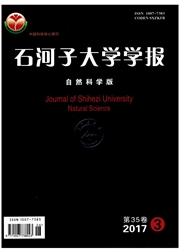

 中文摘要:
中文摘要:
对铁致外伤后癫痫(PTE)动物模型的行为学和脑电图进行研究以探讨其研究应用价值.采用离子导入法(PIFC)和微量注射法(CFCI)建立铁致PTE大鼠模型,观察大鼠行为学变化,同时监测脑电图.CFCI建立起的大鼠模型癫痫发作形式主要表现为翻转跳起,四肢抽搐,2周内发作频率逐渐降低;PIFC建立起来的大鼠模型癫痫发作形式主要表现为咀嚼自动症,1d后基本观察不到癫痫发作.癫痫发作的同时,这两种方法建立起来的PTE大鼠模型的脑电图上都出现了癫痫波.铁致PTE动物模型是一种稳定可靠的PTE动物模型.CFCI建立起来的PTE动物模型与PIFC相比,更有研究价值.
 英文摘要:
英文摘要:
Research the behavior and the electroencephalograms (EEGs) of rat models of post traumatic epilepsy (PIE) and study the value of them. The iron induced rat models of FIE were established by using the methods of cortical ferric chloride injection(CFCI) and pial iontophoresis of ferric chloride(PIFC), then observed the behavior changes and recorded the EEGs of the FIE models. The two FIE animal models were both appeared the epileptic seizures. The epileptic seizure manifestation of the animal model established by the CFCI mainly appeared as turnover upspring and limbs' convulsion, the epileptic seizure frequency decreased gradually in two weeks after the operation. The epileptic seizure manifestation of the rat model established by PIFC mainly appeared as automatic behavior of chewing, the epileptic seizure frequency decreased gradually in one day after the operation. Both of these two models' EEGs appeared the epileptic discharges. Iron induced post traumatic epilepsy animal model is stable and credible. The method of CFCI is more preferable.
 同期刊论文项目
同期刊论文项目
 同项目期刊论文
同项目期刊论文
 期刊信息
期刊信息
